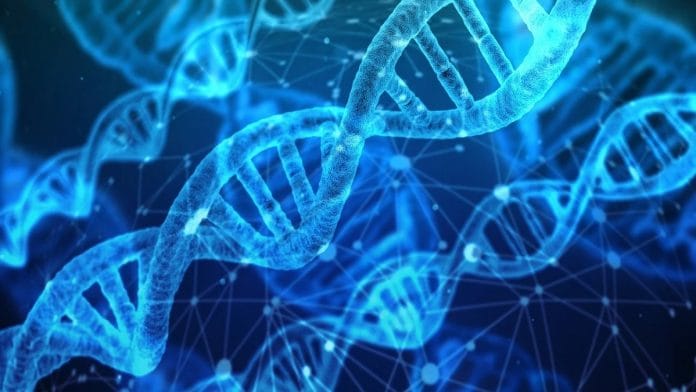New Delhi: Using DNA, scientists from Duke University and Arizona State University have created the world’s smallest pottery — including vases, bowls, and hollow spheres.
Using a new open source software program, the team designed new objects out of threadlike molecules of DNA, bent and folded into complex three-dimensional objects with nanometer precision. The software lets users take drawings or digital models of rounded shapes and turn them into 3D structures made of DNA.
Each tiny hollow object is no more than two millionths of an inch across. More than 50,000 of them could fit on the head of a pin. The software could allow researchers to create tiny containers to deliver drugs, or molds for casting metal nanoparticles with specific shapes for solar cells, medical imaging and other applications.
The method involves folding one or a few long pieces of single-stranded DNA with help from a few hundred short DNA strands that bind to complementary sequences on the long strands and staple them in place. Read more.
Also Read: How are stars like Sun formed? James Webb Space Telescope images hold key to new investigations
Scientists trigger artificial hibernation in monkeys
Scientists have managed to activate a group of brain cells in monkeys to trigger an artificial state of hibernation that could help humans in their deep space ventures in future.
Hibernation is a state adopted by certain animals to adapt to adverse winter conditions. Common among reptiles, hibernation includes greatly reduced metabolic activity and lowered body temperature.
As warm-blooded animals, primates — except lemurs — do not naturally hibernate or even experience torpor.
The researchers explored thermoregulation in the nonhuman primate Macaca fascicularis by combining chemogenetic manipulation, functional magnetic resonance imaging (fMRI) scanning, behavioral analysis, and monitoring of a comprehensive set of physiological and biochemical parameters.
The researchers selectively targeted excitatory neurons in the hypothalamus in the monkey brain by locally infecting neurons with DREADD-encoding viruses driven by the CAMKII promoter. “DREADD” refers to designer receptors which get activated by designer drugs.
They were able to reliably trigger hypothermia in anesthetised and awake monkeys. Read more.
Also Read: Scientists identify molecule that may have been key to formation of life on Earth
Web-like structures found in first UV images of Sun’s Corona
Scientists have taken the first ultraviolet images of the Sun’s middle corona (layer) and discovered web-like plasma structures.
The team from Southwest Research Institute (SwRI), National Aeronautics and Space Administration (NASA) and the Max Planck Institute for Solar System Research (MPS) said their findings could lead to a better understanding of the solar wind’s origins and its interactions with the rest of the solar system.
To find new ways to observe the Sun’s corona, researchers pointed the Solar Ultraviolet Imager (SUVI) on NOAA’s Geostationary Operational Environmental Satellites (GOES), at either side of the Sun instead of directly at it and made UV observations for a month. They spotted elongated, web-like plasma structures in the Sun’s middle corona. Interactions within these structures release stored magnetic energy propelling particles into space.
These observations could lead to more comprehensive insights and even more exciting discoveries from future missions.’ Read more.
Mars Rover drops first sample for Earth return mission
The Mars Perseverance Rover deposited the chalk-size sample tube containing the core of igneous rock, taken from a region of Mars’ Jezero Crater in January 2022, that could be picked up for a trip to Earth in the future.
The joint European Space Agency (ESA) and NASA Mars Sample Return (MSR) campaign will consist of several missions to return the first scientifically selected samples from the surface of another planet to Earth.
NASA’s Perseverance Rover, which has scouted 13 kilometres of the martian surface and acquired 17 rock and regolith samples and one atmospheric sample since its arrival in 2021, will deliver samples to the NASA Sample Retrieval lander (SRL). The SRL is equipped with an ESA 2.5 m Sample Transfer Arm and a rocket for launching the sample container into martian orbit.
Once there, an ESA spacecraft will capture the container and bring it safely to Earth.
The backup plan is to create a depot of samples by early 2023, should the rover be unable to deliver the samples itself to the lander in 2030. This reconfiguration of the campaign now includes two recovery helicopters that will be deployed from the lander to fetch the tubes.
The first of the 10 tubes that will make up the backup depot was deposited at a designated site called ‘Three Forks,” a carefully selected patch of the Martian surface. Read more.
Crocodile species that coexisted with dinosaurs found in Brazil
Scientists have discovered a crocodile ancestor species in Brazil that lived with titanosaur dinosaurs about 72 and 66 million years ago.
The crocodilian species, named Titanochampsa iorii was between 3 and 6m, long and had a “very strong bite,” according to the researchers.
The team found a part of the skull in the Monte Alto region in the Brazilian state of São Paulo in 1987. However, at the time, the specimen was labeled as a “partial titanosaur skull” in the museum exhibition.
But it was later acknowledged as a “fragmentary crocodyliform skull.”
Scientists suspect the ancient animal likely showed semiaquatic behaviour inhabiting an arid or semiarid environment.
“Both the large size of Titanochampsa iorii and its inferred strong bite are compatible with an amphibian lifestyle, including ambushing behavior, as seen in most crocodiles nowadays and matching its possible affinity to Eusuchia,” scientists wrote in the study. Read more.
(Edited by Anumeha Saxena)
Also Read: Covid-19 vaccine alters menstrual cycle, finds study & a Cretaceous era turtle the size of a car






